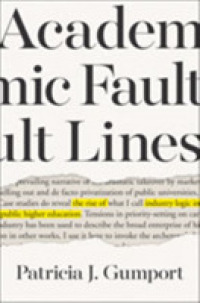Full Description
This volume offers a comprehensive and up-to-date overview of applied research efforts in the Middle East and North Africa (MENA). This region has not received due attention in the literature and this publication provides a much-needed contribution to the existing body of knowledge. The editor recruited a number of renowned scholars who either work in the MENA countries or have experience doing research in this region to contribute to this project. The selection of chapters ensured representation of applied linguistics efforts in North Africa, the Levant, and the Gulf. The book looks into language research within social and educational MENA contexts. The final part of the book provides a forward-looking perspective about applied linguistics research and practices in the Middle East and North Africa. The book is primarily written for those interested in applied linguistics, particularly researchers, graduate students, and language professionals in the MNEA region.
Contents
1. To my parents; 2. Acknowledgments; 3. Chapter 1. Applied linguistics research in the Middle East and North Africa: An overview (by Gebril, Atta); 4. Section I. Language in society; 5. Chapter 2. When the president loses his voice, the people capture speech (by Boussofara, Naima); 6. Chapter 3. Religion and identity in modern Egyptian public discourse (by Bassiouney, Reem); 7. Chapter 4. English between Egyptians: Power and ownership of the English language in Egypt (by Lewko, Alexander M.); 8. Chapter 5. The age of global English: Language use and identity construction in the United Arab Emirates (by Dahan, Laila S.); 9. Chapter 6. The linguistic landscape of Cairo from the Rosetta Stone to the Ring Road billboards: Signs of their times (by Plumlee, Marilyn); 10. Chapter 7. The ongoing rivalry between English and French in Lebanon (by Shaaban, Kassim); 11. Section II. Language in education; 12. Chapter 8. A Qatari case for authenticity in the investigation of reading abilities and strategies (by Reynolds, Dudley); 13. Chapter 9. The development and validation of an Arabic language test in Saudi Arabia (by Norrbom, Bjorn); 14. Chapter 10. A survey of English language proficiency requirements for admission to English-medium universities in Arabic-speaking countries (by Boraie, Deena); 15. Chapter 11. Student teachers' computer-mediated narratives-in-interaction: Sharing notions of culture, teaching and language acquisition (by Fredricks, Lori); 16. Chapter 12. Arabic language teacher education (by Taha, Hanada); 17. Chapter 13. Corpora and the study of Arabic vocabulary (by Abdou, Ashraf); 18. Section III. Future directions of applied linguistics in the MENA countries; 19. Chapter 14. Whither Arabic?: From possible worlds to possible futures (by Eisele, John C.); 20. Chapter 15. A forward-looking conceptual framework for Arabic curriculum design and instructional methodology (by Alosh, Mahdi); 21. Chapter 16. Applied linguistics in the MENA countries: A research agenda (by Gebril, Atta); 21. Bibliographies; 22. Author index; 23. Subject index








